The Yangzhou rod puppet has been developing with its unique characteristics and charm to this day. The performance of the puppet shows and styling of the puppet keeps developing continuously and innovatively, rejuvenating the traditional art. Costume making is an important part of the whole puppet-making process, as costumes show the character, social status, change of life and so on of the puppet role. So to speak, there would be no successful puppet show without fine workmanship of costume adornment.
Ⅰ. The Use of Pigments
1. Make Model “Seals”
Puppet costumes look slightly dull if pure color fabrics are directly used. They would appear lively if the fabrics have simple decorative patterns on them. For the production of repetitive small simple patterns, we make model “seals”. To make the so-called “seals”, we select hard materials that have been saved for a long time, paint patterns we need on them, and then carve the patterns with a knife. With the “seals” ready, we take a suitable amount of acrylic paint with them, and print the pattern on the costumes in accordance with the laws of formal beauty. The method is fast and it guarantees unified sizes. In puppet show The Viburnum Macrocephalum Fairy, the costume decoration technique of making model “seal” is massively used.
2. Paint Patterns
To make the puppets livelier, patterned are often applied in fabric design. In real life, sometimes in the market there are no fabrics exactly the same as the design pictures. In such cases, we need to process fabrics. We paint designs according to different requirements. There are abstract and also concrete designs. Some patterns adorn the costumes as accessories. The “big wall” costume in Nutcracker was made of pure dark gray fabrics at first, and then bricks were painted on them.
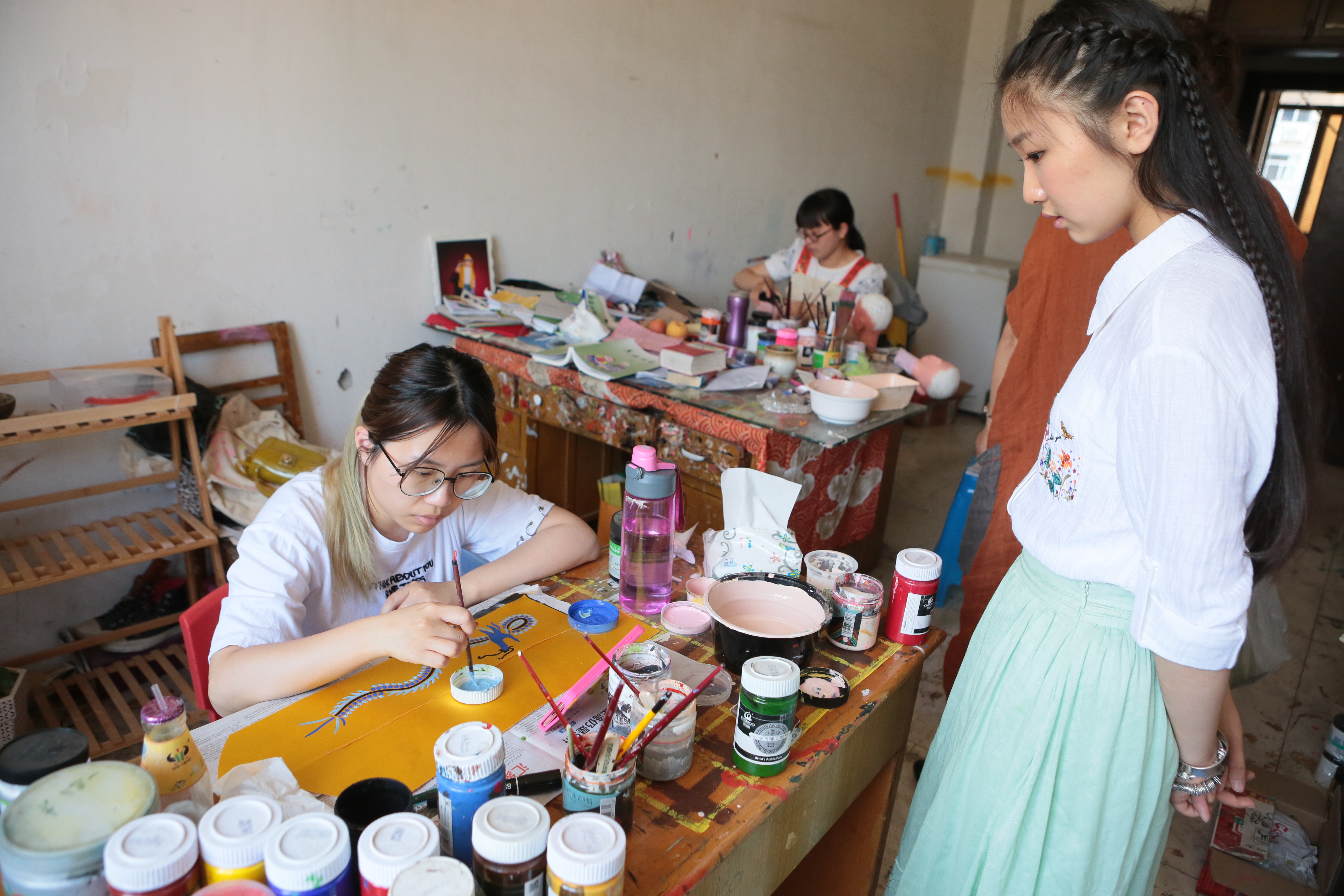
Ⅱ. Fabric Reprocessing
1. The Borrowing of Fabrics
The borrowing of fabrics refers to a method that when there is no available pattern on the original fabrics, we cut out ready-made patterns from other fabrics, and stick them to puppet costumes. When puppet makers of the puppet research institute were making a face-changing puppet Xiang Yu for Sichuan in 2012, they needed dragon and phoenix patterns to adorn the back side of the yellow cloak, the belt and the opera hat. To get what they needed, they brushed a layer of latex on blue tapestry satin fabrics with dragons and phoenixes, and cut the patterns they wanted after the fabrics dried out.
2. The Addition and Subtraction of Fabrics
Fabric re-making is actually a re-design of fabrics. The designer innovates fabrics with a unique sense of creation and rich imagination. Addition design is a process from simplicity to complication, while subtraction design is a process from complication to abstraction. For example, subtraction design was applied when the armor of the Peking-Opera-style Xiang Yu puppet was designed.
3. The Deformation and Synthesis of Fabrics
The deformation of fabrics means shirring. Pleat is a kind of structure form of clothing. Differences in pleat directions, quantities and skills show different effects. Shirring is the most frequently used method in puppet costumes. It enriches the styles of costumes, shortens the longer parts of fabrics and strengthens the decorative effect.
Synthesis refers to the application of at least two design methods at the same time to create fabrics that are full of changes. These design methods need to be flexibly and comprehensively used when puppet costumes are deigned, so as to make the costumes more vivid, gorgeous and delicate.
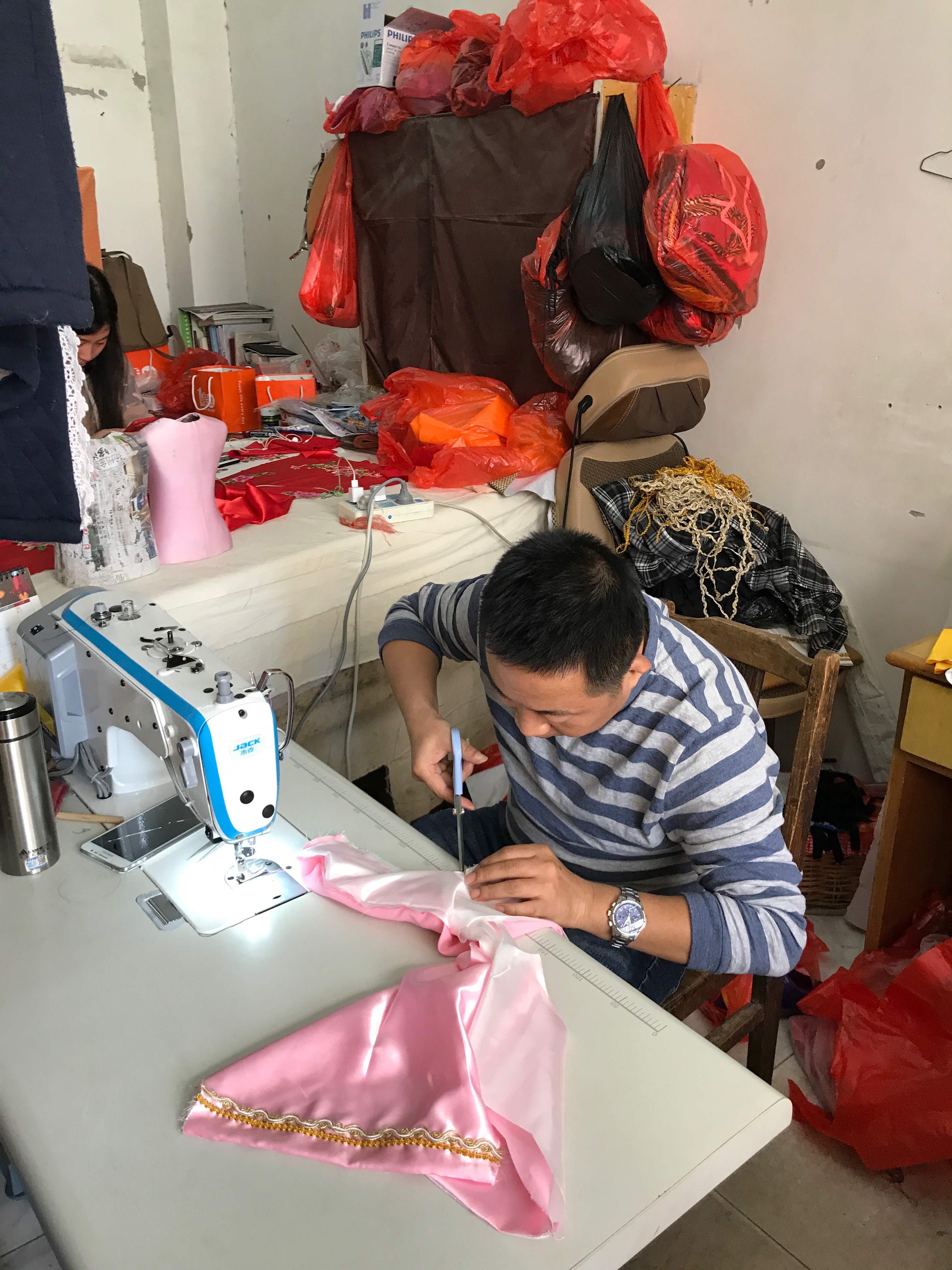
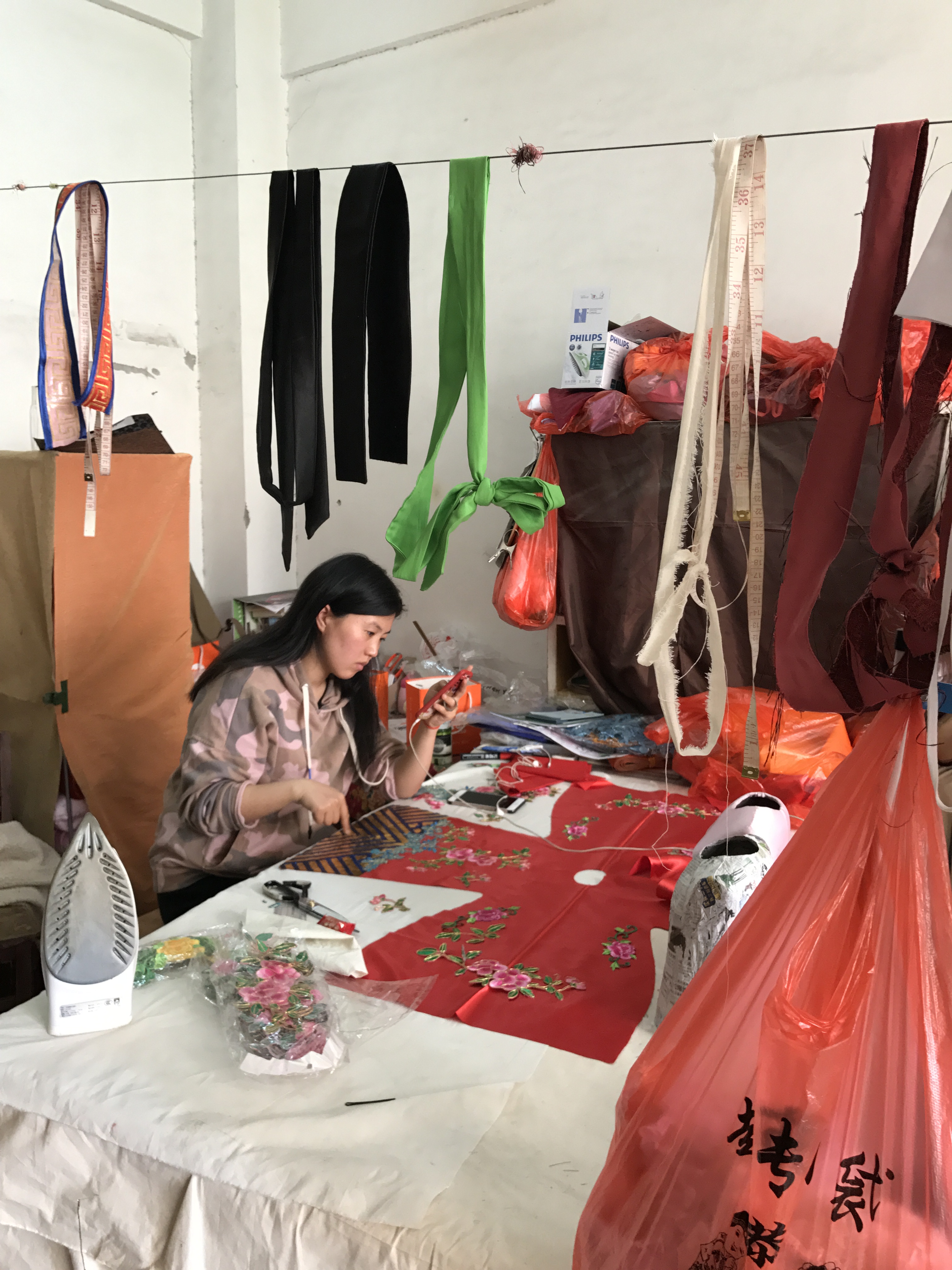
Ⅲ. The Color Change of Sequins and Gems
Sequins and gems are often used on puppet costumes. Be it modern costume or ancient costume, they can add beauty and appeal to it.
The change of color is to change the original colors and attributes of sequins and gems. When the sizes and shapes of sequins and gems are suitable but their colors need to be changed, we spray paint evenly onto them, wait for the paint to dry and then sew them onto costumes with needles and threads. In Nutcracker, the sequin color on character Ding Ding’s costume was not in contrast with the color of the white satin, which was discordant and didn’t match the whole styling. After lemon yellow paint was evenly sprayed on the sequins, the match of yellow and white made Ding Ding dapper and handsome.

Ⅳ. PE Auxiliary Adornment
Fabrics are soft. To make them stiffer, PE is needed as auxiliary accessories. PE is mostly used as accessories when it’s involved in clothing. Its advantages of light weight and moderate hardness are taken to make up for fabrics’ characteristic of being too soft. For instance, Rugao Puppet Troupe hired the Yangzhou institute to make a low- ranking official buffoon with jade pieces on its belt. To make these jade pieces, thin PE materials were cut into pieces in suitable sizes and then stuck to the belt.
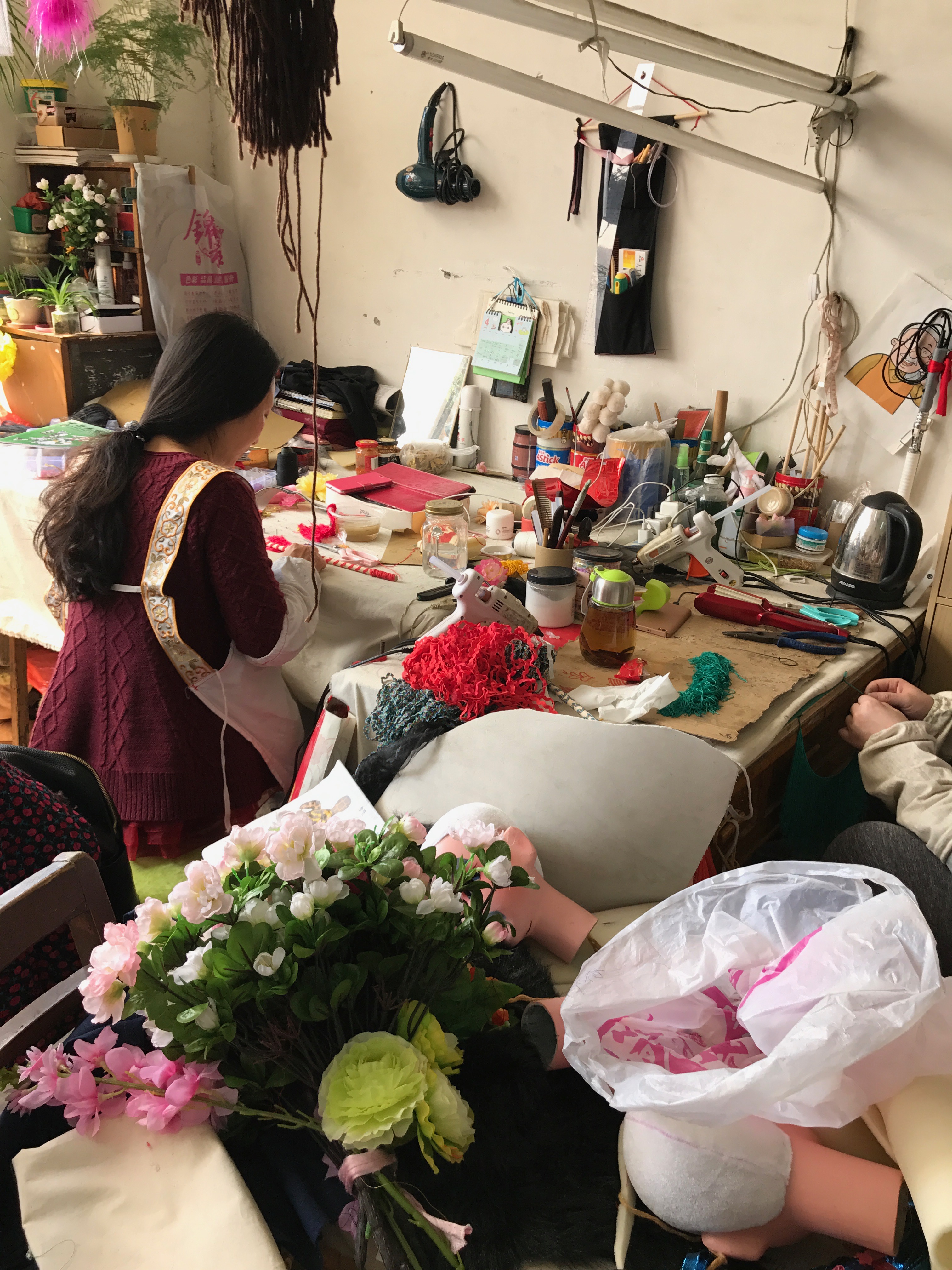
Ⅴ. Piping
When two pieces of fabrics are sewn, there is a stitch line. To “cover the blemish”, sequins or ribbons are sewn on the stitch line, which makes the fabrics more beautiful. The process is called piping. Piping is often applied in puppet costumes and is a very important part of puppet adornment.
Piping is frequently used in ancient puppet costumes and European-style costumes. Sometimes to uplift the styling effect, piping is deliberately applied. For instance, in The Drunken Beauty, golden ribbons were sewn into wavy shapes on the breast part of the empress’s costume, which makes the costume more dignified and gorgeous.
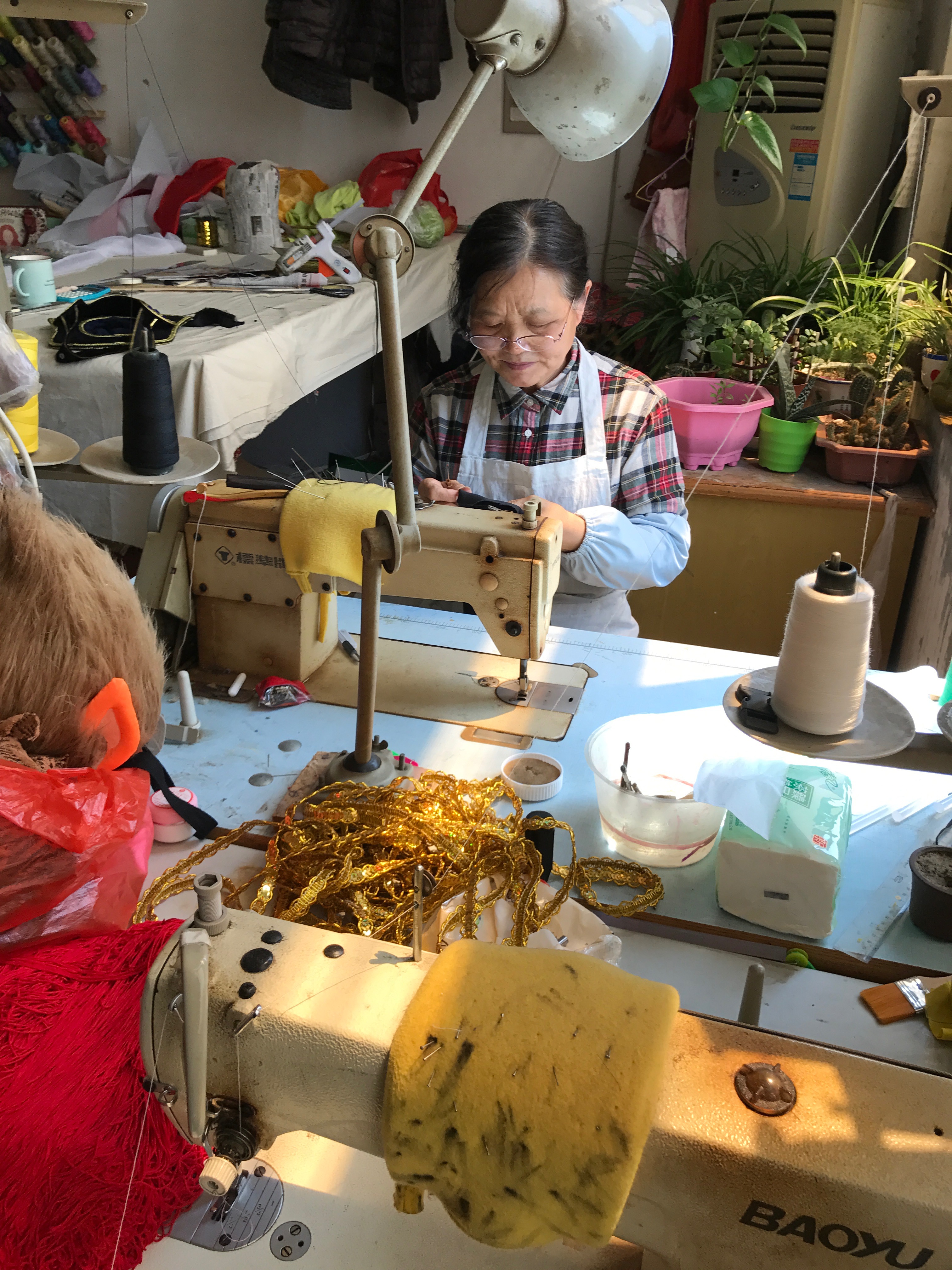
Ⅵ. Fabric Dyeing
Simply speaking, dyeing is to change the original color of fabrics. When the Yangzhou Puppet Research Institute is making puppet costumes, real silk is often dyed. Dyeing is divided into gradient dyeing, single-color dyeing and multi-color dyeing. Generally, toner is used as stain.
Ⅶ. Binding
Binding, also called edging, is a craft of tailoring often used at the raw edges of fabrics. Binding is also a technique of decoration. The fabrics used for binding can be different from the sewed fabrics in color and texture. When binding is done, the contrast of two fabrics burnishes the costumes. Binding is massively used to adorn the round collars of opera costumes, costume collars and belts of the Han Dynasty, as well as narrow cuffs and raw edges.
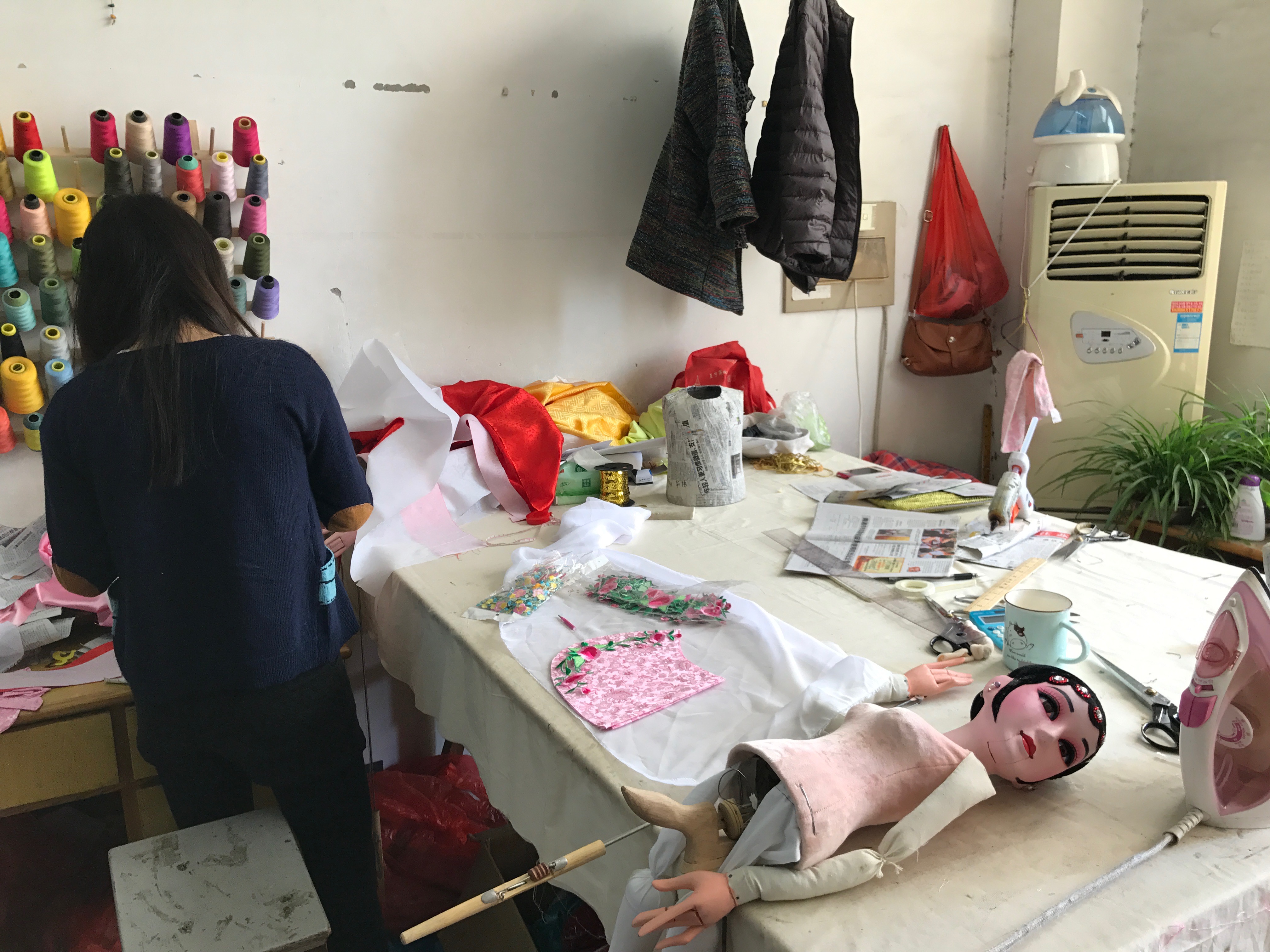

Ⅷ. Welting
Welting is also widely used and often seen in cuffs, round collar edges and dress hems of puppet costumes. Welting in puppet costumes actually refers to pieces stitched at the edge of fabrics.
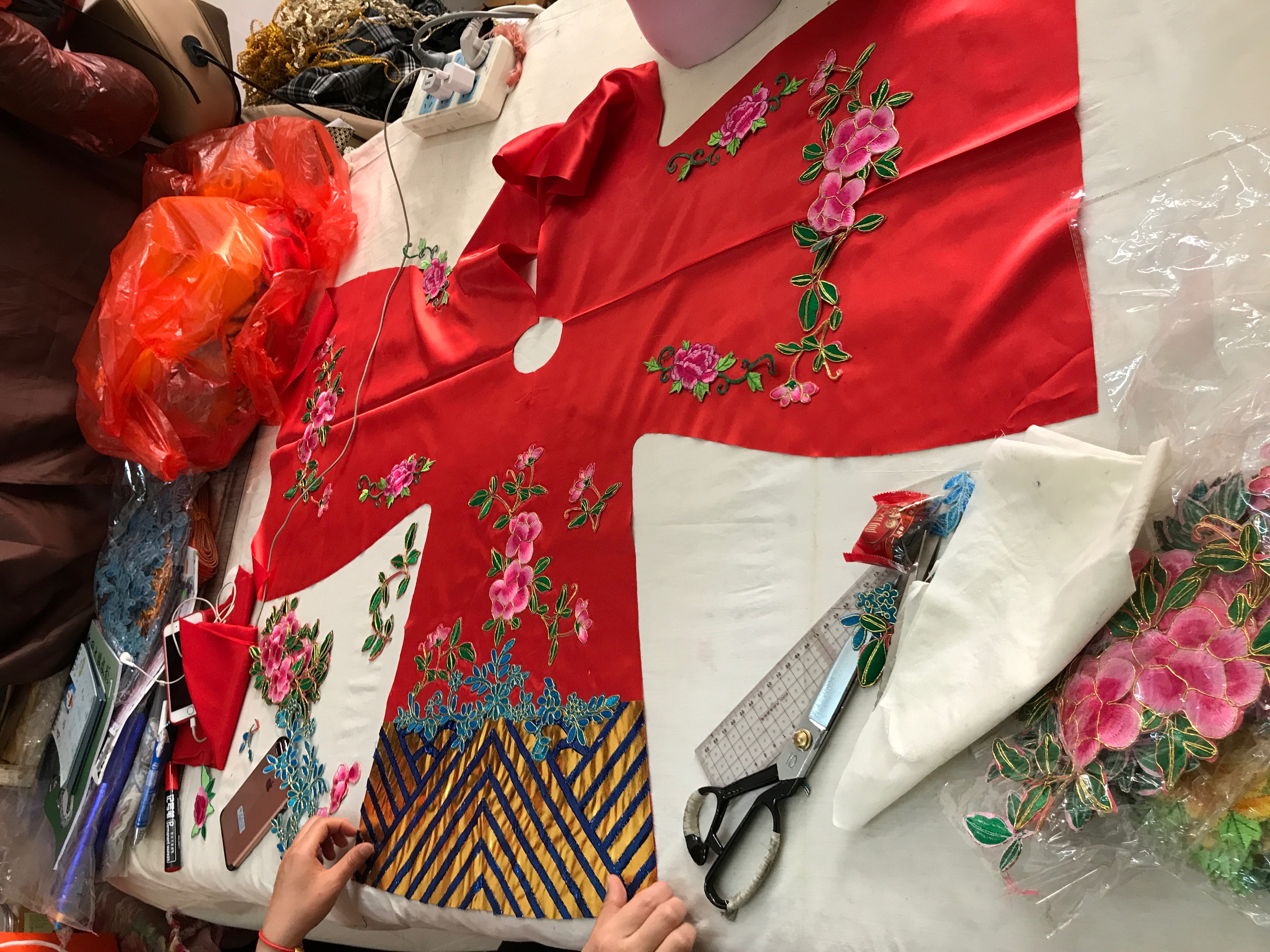

Conclusion
There is more than just one way to adorn puppet costumes. We find that a successful puppet costume tends to be made by a combination of several decoration techniques. We need to summarize and accumulate experience in daily life, in order to apply them comprehensively and flexibly.

 all
all Puppet show
Puppet show Puppet show and me
Puppet show and me
I want to leave a message